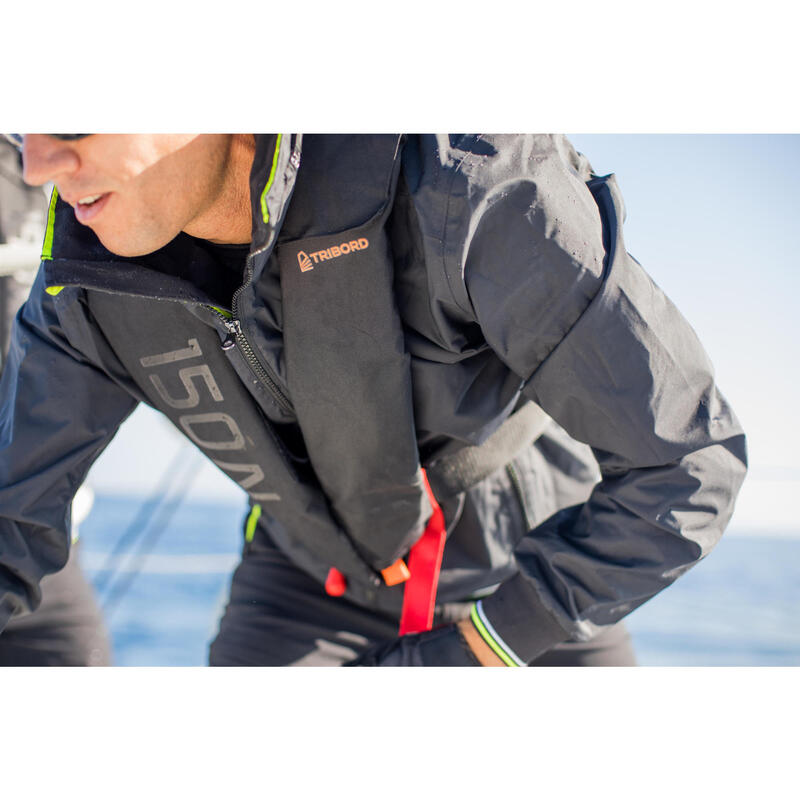Which body shape is right for this vest?
Designed for sailors weighing between 40 and 130kg with a waist circumference of between 60 and 130cm.
How does automatic triggering work?
When falling into the water, the salt tablet dissolves instantly, piercing the compressed CO2 cylinder and inflating the bladder in less than five seconds.
To reactivate the vest:
- Deflate it using the back of the mouth inflation tube cap.
- Fold back the bladder and close the textile envelope.
Change the cartridge and salt tablet following the instructions in the reactivation kit: 8303768
How do you check your lifejacket before setting off? 1/2
- CO² cartridge: check for holes, corrosion and tightness
- Trigger (black): tightly screwed on, not expired, green cap present
- Firing pin (yellow): green seal (green triangle) present, indicating that the vest has not been triggered.
- Vest: complete and free of wear (tears, fraying), inflatable bladder stored in its cover.
How do you check your lifejacket before setting off? 2/2
In addition, on a regular basis (at least once a year):
- Inflate the vest using the mouthpiece, and leave inflated for 24 hours: the vest must not lose pressure
- Check the trigger's expiration date.
How do you rearm your vest?
Please follow the order of assembly:
1. Remove the CO² tablet and salt tablet
2. Replacing the salt tablet
3. Replacing the CO² cartridge
If you don't follow this assembly sequence, you run the risk of hitting the new cartridge if the salt tablet release system has been used previously.
When do you need to replace the gas cylinder and firing pin (salt tablet)?
The dates on the CO² cartridge and on the salt tablet have different meanings:
- Salt tablet = Expiry date, written as 05 2025 (for May 2025). It must be replaced once this date has passed.
- CO² cartridge = date of manufacture, written as 05 2021 ( manufactured in May 2021): the cartridge must be replaced 5 years after this date.
Storage conditions
The trigger uses a UML salt tablet, which is sensitive to water and humidity.
Storage in damp, poorly ventilated and/or hot conditions may lead to condensation, causing the trigger to trip.
To avoid accidental triggering, we recommend that you ensure the vest is dry (inside and out) before storing it in a ventilated area.
Storage in damp, poorly ventilated and/or hot conditions may lead to condensation, causing the trigger to trip.


















